Evolutionary Ecology
The department of Evolutionary Ecology gathers complementary skills in behavioural ecology, population dynamics, population biology, community ecology, and methodology (statistics and modelling). The research done in the department aims at studying how animal species evolve in a changing world by understanding the causes of the evolution of traits, adaptations and interactions. For that, we consider different levels of organization from individuals to populations and communities. Because organisms cannot be considered isolated from other biotic factors, we consider pathogens but also competing species within communities.
We study how individuals adapt to their environments that are largely impacted by anthropic pressures, and how life history traits and behaviour evolve in response to these pressures. Although we mainly focus on phenotype, we more and more consider the mechanistic link between the genotype and the phenotype. We develop the theoretical framework of our discipline through a conceptual and modeling approach. In parallel, we test hypotheses that arise from theoretical predictions through experimental, comparative and observational approaches on different biological models (insects, birds, mammals). Experimental approaches are developed in the laboratory (insect model) and in natura (bird, insect and mammal models). Observational and comparative research is mainly concerned with vertebrates. Our approaches are also, and increasingly, interested in the mechanisms of adaptive responses. In addition to the classical approaches of demographic analysis and trait change, methods of ecophysiology, chemical ecology and molecular biology are used.
Our department hosts several long-term studies of wild populations of different species. These long-term studies offer a valuable way to understand how biotic and abiotic factors affect individuals’ life history traits, and the functioning of populations in natura. Five populations of mammalian species are thus monitored for several years (more than 40 years on roe deer, 30 on Alpine marmots, 25 years on cats, 16 years on zebras, and 20 years on impala). Two of our study sites (La Sassière in Vanoise National Park (Alpine marmots) and Hwange National Park) have been certified as “Site d’Etude en Ecologie Globale” (SEEG), and two (ZA “Hwange” and ZA “Antarctic and sub-Antarctic”) were certified as “Zone Atelier” by the CNRS.
The department of Evolutionary ecology is also largely involved in training activities. Lastly, we also have strong socio-economic relationships. Indeed, because we address questions of major societal interest (global warming, public health) we tightly collaborate with socio-economic partners (Office Français de la Biodiversité, Vanoise National Park, Hwange National Park in Zimbabwe, Office National des Forêts, etc.) and participate to general public and media events.
Publications
Display of 631 to 660 publications on 2483 in total
Revisiting giraffe photo-identification using deep learning and network analysis
Preprint
see the publicationIsotopic evidence of individual specialization toward free-ranging chickens in a rural population of red foxes
European Journal of Wildlife Research . 66 ( 1 )
Journal article
see the publicationEvolutionary stasis of the pseudoautosomal boundary in strepsirrhine primates
eLife . 9
DOI: 10.7554/eLife.63650
Journal article
see the publicationAsynchrony of actuarial and reproductive senescence: a lesson from an indeterminate grower
Biological Journal of the Linnean Society . 131 ( 3 ) : 667-672
Journal article
see the publicationPopulation position along the fast–slow life‐history continuum predicts intraspecific variation in actuarial senescence
Journal of Animal Ecology . 89 ( 4 ) : 1069-1079
Journal article
see the publicationThe challenges of estimating the distribution of flight heights from telemetry or altimetry data
Animal Biotelemetry . 8 ( 1 ) : 5
Journal article
see the publicationStay home, stay safe—Site familiarity reduces predation risk in a large herbivore in two contrasting study sites
Journal of Animal Ecology . 89 ( 6 ) : 1329-1339
Journal article
see the publicationDistance sampling of duikers in the rainforest: Dealing with transect avoidance
PLoS ONE . 15 ( 10 ) : e0240049
Journal article
see the publicationY chromosome makes fruit flies die younger
Peer Community In Evolutionary Biology . : 100105
Other publication
see the publicationModèles de croissance des micro-organismes, in Micro-organismes & biodiversité
Textes et documents pour la classe . 1130 : 60-63
Journal article
see the publicationDevelopmental variability channels mouse molar evolution
eLife .
DOI: 10.7554/eLife.50103
Journal article
see the publicationExperimental evolution of virulence and associated traits in a Drosophila melanogaster - Wolbachia symbiosis
Peer Community In Evolutionary Biology . : e9
DOI: 10.24072/pcjournal.9
Journal article
see the publicationInsects and incest: Sib‐mating tolerance in natural populations of a parasitoid wasp
Molecular Ecology . 29 ( 3 ) : 596-609
DOI: 10.1111/mec.15340
Journal article
see the publicationSyndrome de Klinefelter, rôle du chromosome Y dans l’espérance de vie humaine ?
36ème Congrès de la Société Française d'Endocrinologie (SFE Marseille 2020) . 81 ( 4 ) : 194
Conference paper
see the publicationIs degree of sociality associated with reproductive senescence? A comparative analysis across birds and mammals
Preprint
see the publicationAssessing the Diversity of the Form of Age-Specific Changes in Adult Mortality from Captive Mammalian Populations
Diversity . 12
DOI: 10.3390/d12090354
Journal article
see the publicationPathogens Shape Sex Differences in Mammalian Aging
Trends in Parasitology . 36 ( 8 ) : 668-676
Journal article
see the publicationThe crustacean Armadillidium vulgare (Latreille, 1804) (Isopoda: Oniscoidea), a new promising model for the study of cellular senescence
Journal of Crustacean Biology . 40 ( 2 ) : 194-199
Journal article
see the publicationPopulation genetic structures at multiple spatial scales: importance of social groups in European badgers
Journal of Mammalogy . 101 ( 5 ) : 1380-1391
Journal article
see the publicationL’apport de la génétique dans la compréhension de l’évolution des populations de ratons laveurs
Faune Sauvage .
Journal article
see the publicationMorphometrics and genetics highlight the complex history of Eastern Mediterranean spiny mice
Biological Journal of the Linnean Society . 130 ( 3 ) : 599-614
Journal article
see the publicationThe mark of captivity: plastic responses in the ankle bone of a wild ungulate (Sus scrofa)
Royal Society Open Science . 7 ( 3 ) : 192039
DOI: 10.1098/rsos.192039
Journal article
see the publicationBorn to be young? Prenatal thyroid hormones increase early-life telomere length in wild collared flycatchers
Biology Letters . 16 ( 11 ) : 20200364
Journal article
see the publicationExplore and move: a key to success in a changing world
Peer Community In Ecology .
Journal article
see the publicationExplore and move: a key to success in a changing world
Peer Community In Ecology . : 100058
Journal article
see the publicationHeterospecific song quality as social information for settlement decisions: an experimental approach in a wild bird
Animal Behaviour . 161 : 103-113
Journal article
see the publicationHost dispersal shapes the population structure of a tick‐borne bacterial pathogen
Molecular Ecology . 29 ( 3 ) : 485-501
DOI: 10.1111/mec.15336
Journal article
see the publicationInvestigating microbial associations from sequencing survey data with co-correspondence analysis
Molecular Ecology Resources . 20 ( 2 ) : 468-480
Journal article
see the publicationCan an herbivore affect where a top predator kills its prey by modifying woody vegetation structure?
Oecologia . 192 ( 3 ) : 779-789
Journal article
see the publication
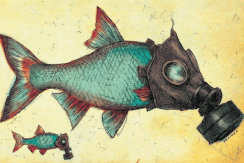
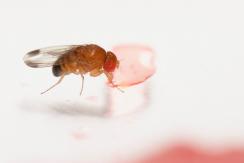
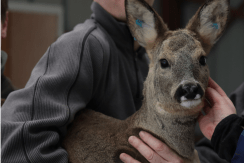
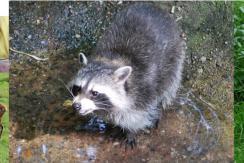
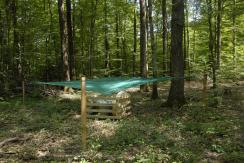
You also, comment on this article